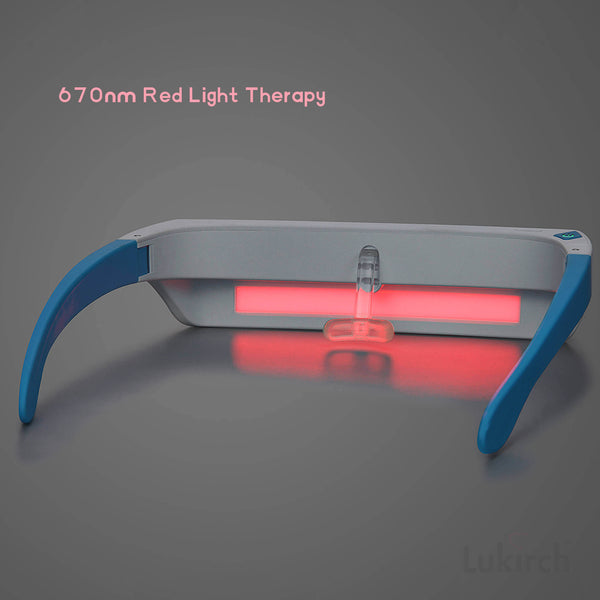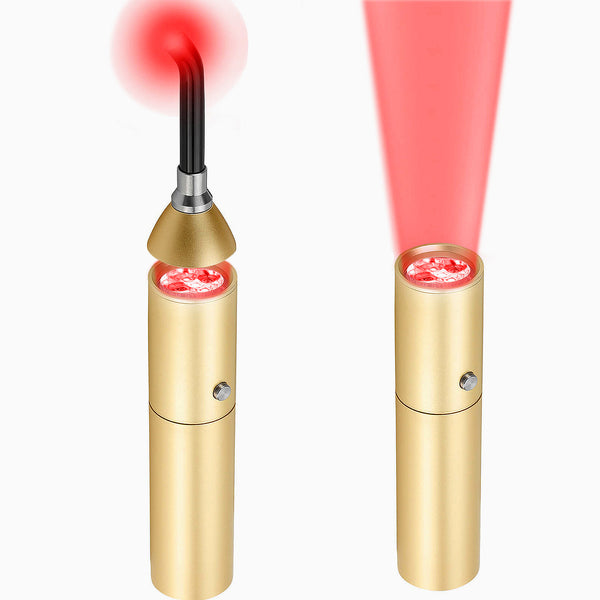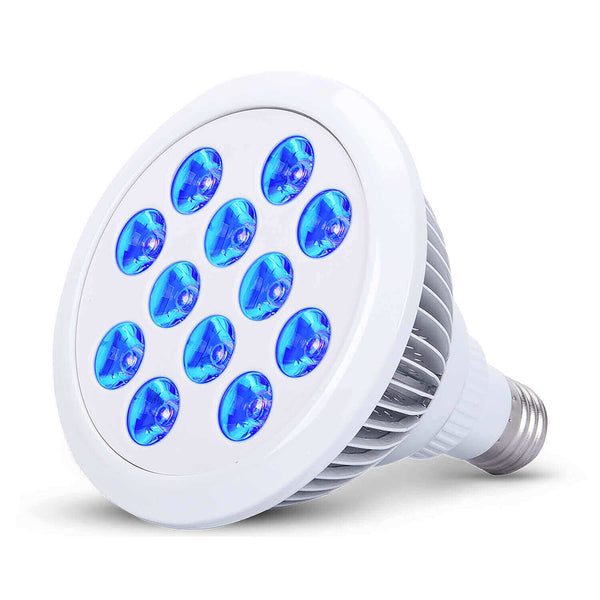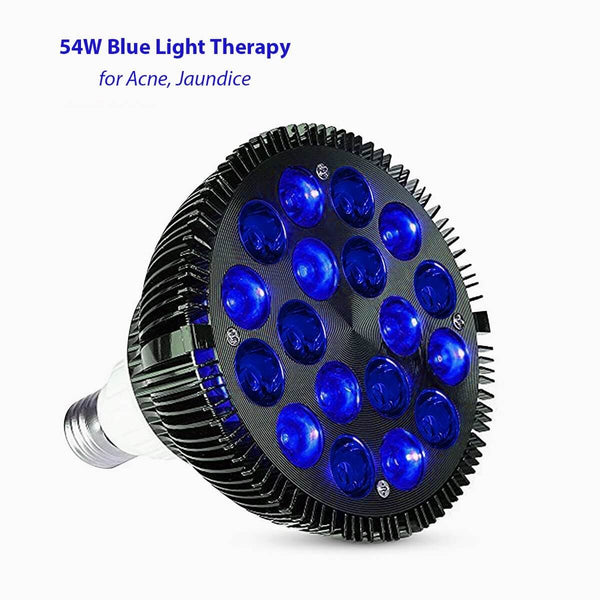2023 NEW Light Therapy Glasses (Blue + White)
SKU: LUK-GLASSES-PRO
VENDOR: Lukirch
You Save: $70.00 (36%)
Free Shipping.
90-Day Money-Back
1 Year Warranty

Do you need a light therapy glasses?
During autumn, when daylight hours noticeably decrease and people spend more time indoors, the cumulative effects of reduced light can lead to what is commonly known as winter depression. This condition manifests through various symptoms:
- Imbalance
- Subdued mood
- Lack of energy and listlessness
- Generally feeling under the weather
- Need for more sleep
- Loss of appetite
- Difficulty concentrating
These symptoms occur because light, especially sunlight, plays a crucial role in our well-being and directly affects our bodies. Sunlight indirectly regulates the production of melatonin, a hormone released only in darkness, which signals our body when it's time to sleep. In months with less sunlight, melatonin production increases, making it harder to wake up in the morning as our body functions slow down. However, using a daylight therapy glasses immediately upon waking, preferably as early as possible, can suppress melatonin production and improve mood. Furthermore, light deficiency also impacts the production of serotonin, the "happiness hormone," which significantly influences our well-being. Light therapy can rebalance these hormone levels and positively affect our activity levels, emotions, and overall well-being. By providing a suitable replacement for natural sunlight, a daylight therapy glasses can help counteract this hormonal imbalance.
In the medical field, daylight therapy glasses are employed to compensate for light deficiency's effects. These lamps simulate daylight at intensities of 10,000 lux, which can influence the human body and serve as a treatment or preventive measure. Standard electric lighting is insufficient to impact hormonal balance, as even well-lit offices typically provide just 500 lux of illuminance.
 Key Features:
Key Features:
Research indicates that different individuals may have varying sensitivities to blue or white light. These light therapy glasses feature a dual-light dual-mode design, allowing you to try one mode for a few days before switching to the other mode. This way, you can select the mode that best suits your individual needs and sensitivities.
Rest assured that these light therapy glasses are completely safe for your eyes. They adhere to the IEC 62471 photobiological safety testing standard. The spectrum used in these uv-free glasses is also free from infrared and any wavelengths that could be hármful to the human body. Furthermore, the glasses have a gradual brightness increase, allowing your eyes to adapt slowly to the blue and white light within 60 seconds when you begin using them.
This blue light therapy device comes with a built-in 300mAh lithium battery, offering around 2 hours of usage on a single charge. Weighing only 65g, it's highly portable and can be worn anywhere, whether you're working, cooking, reading, walking, exercising, or dining.
The light therapy glasses offer a timer function with three preset levels: 15 minutes, 30 minutes, and 45 minutes. This convenient built-in timer allows you to choose the duration according to your needs, and the glasses will automatically turn off when the set time is reached.
Unlike ordinary LED light sources that can cause eye discomfort such as dryness and pain, the full-spectrum LED (life is more than 50000 hours) are free from UV light and do not emit any potentially harmful UV rays.

Why is there no effect when I put them on the same day?
Light therapy can be effective in a short period for adjusting jet lag and optimizing shift work, improving sleep quality, and alleviating SAD symptoms. However, continuous use for at least one cycle (7 days) is necessary for all these benefits.
Does blue light harm the eyes?
The light emitted by the light therapy glasses is a low-intensity narrow-band blue light spectrum that complies with photobiological safety standards, with a peak wavelength of 480 nanometers. This wavelength avoids the spectrum close to ultraviolet light, making it safe and without the traditional understanding of blue light hazards.
The product conforms to the IEC 62471:2006 photobiological safety testing standard and has been awarded a "non-hazardous" safety rating test report by the National Light Source Quality Supervision and Inspection Center and the Shanghai Institute of Quality Inspection and Technical Research. However, if you have cataracts, glaucoma, general optic nerve diseases, or inflammation of the vitreous body, please do not use the product.
Why do you need Lukirch's Blue & White phototherapy light?
White Light Therapy: White light therapy, often referred to as full-spectrum light therapy, aims to replicate the natural daylight spectrum. By providing a broad spectrum of visible light wavelengths, typically in the range of 400-700 nanometers, white light therapy mimics the effects of sunlight. This therapy is commonly used to address general light deficiency and promote overall well-being. Exposure to white light therapy can improve alertness, enhance mood, boost cognitive performance, and regulate circadian rhythms. It is particularly useful in environments where access to natural daylight is limited, such as office settings or locations with minimal sunlight exposure.
The combination of blue and white light therapy in a single lamp offers a comprehensive approach to light-based treatments. Users can benefit from the targeted effects of blue light therapy on mood regulation and sleep-wake cycles, while also enjoying the energizing and mood-enhancing properties of white light therapy. This dual functionality allows individuals to customize their light therapy sessions based on their specific needs and maximize the positive effects on their overall well-being.
Who can benefit from bright light therapy?
Bright light therapy is recommended for individuals who are experiencing one or more of the following conditions:
Seasonal Affective Disorder (SAD), also known as seasonal depression or winter blues. Symptoms may include persistent feelings of depression, low energy levels, sleep disturbances, difficulty concentrating, weight changes, and a sense of hopelessness. SAD typically starts in the fall and lasts throughout the winter. People residing in regions marked in dark blue on the map below may be more susceptible to this condition.
Depression. Symptoms of depression can include feelings of sadness or hopelessness, loss of interest in previously enjoyed activities, sleep disturbances, low energy levels, difficulties with concentration and decision-making, and changes in appetite and weight. Unlike SAD, depression persists throughout the year.
Sleep disorders, such as insomnia. Symptoms may involve daytime fatigue, difficulty falling asleep or staying asleep at night, and disturbances in the sleep-wake cycle.
Jet lag. This is a temporary sleep disorder that occurs when you travel across different time zones within a short period of time. Symptoms can include disrupted sleep patterns, daytime fatigue, difficulties with concentration, gastrointestinal problems, and mood changes.
Shift Work Adjustments. Bright light therapy can help synchronize the body's internal clock with unconventional work shift schedules and improve performance during night shifts.
Senile Dementia. Bright light therapy can be used to treat symptoms such as nighttime wandering, sundowning (increased confusion and restlessness in the late afternoon or early evening), and excessive daytime sleepiness in patients diagnosed with senile dementia.
Please note that bright light therapy should be used under professional guidance and supervision, especially for individuals with specific medical conditions or those taking certain medications.
 Specification:
Specification:⌲ Size: 185*165*42 mm
⌲ 2 Colors: Daylight and Blue
⌲ CRI > 97Ra
⌲ New weight: 65 Grams
⌲ Voltage: DC 5V 1A
⌲ Battery: 300mAh lithium
⌲ Brightness: Blue light: 400lux / White light: 1500lux
Package:
1* Light Therapy Glasses
1* Charging Cable
1* Instruction
1* Travel Case
1* Glasses Strap
1* Nose Pads



























